A New Take on the Iconic Girl Reading a Letter by Vermeer
The recently restored Girl Reading a Letter at an Open Window by Johannes Vermeer (1632-1675) is often said to be that of a young woman reading a...
Guest Profile 26 September 2024
Giovanni Boldini (1842-1931) was a popular society portrait painter in turn-of-the-century France and England. His elegant portraits are still much appreciated today. He is best known for depicting gorgeous and fashionable women – mostly socialites, noble women, and actresses – in spectacular dresses. His female portraits are full of life; his men are also striking but not usually as vibrant.
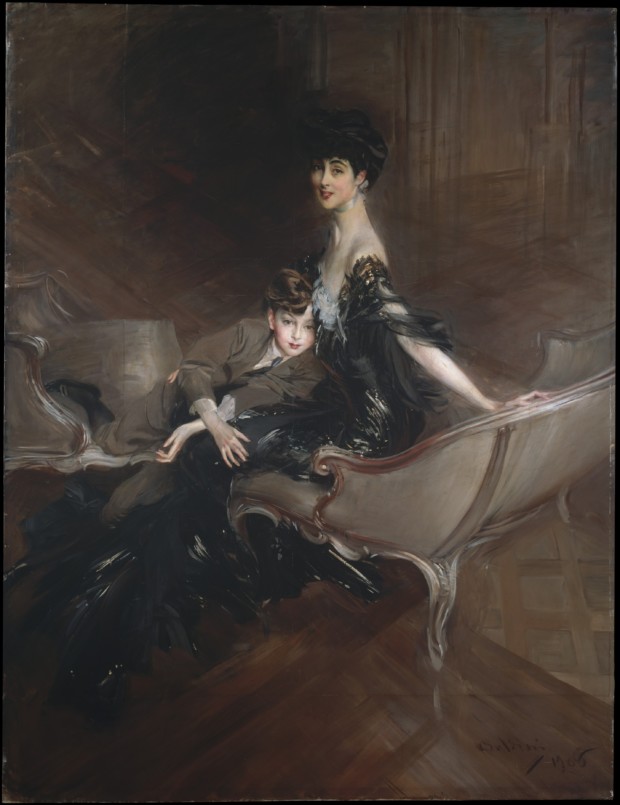
Boldini must have really loved fashion since most of his portraits feature evening gowns at least as prominently as the women wearing them. These dresses typically steal the show, but when you look at them closely, they seem to dissolve into near abstraction. Boldini was a master at using loose, flowing, swirling brushstrokes to indicate elegant silks and chiffons that take on a life of their own. The most recognizable feature of his style, this earned him the nickname “the Master of Swish”. He usually painted other sections of his works, such as sitters’ faces and elegant furniture, with more solidity, and this contrast only makes the fabrics that much more striking. His works are also recognizable for the subjects’ exaggerated pointed chins, bow-like red lips, elegant noses, and lithe hands and fingers held at jaunty angles.
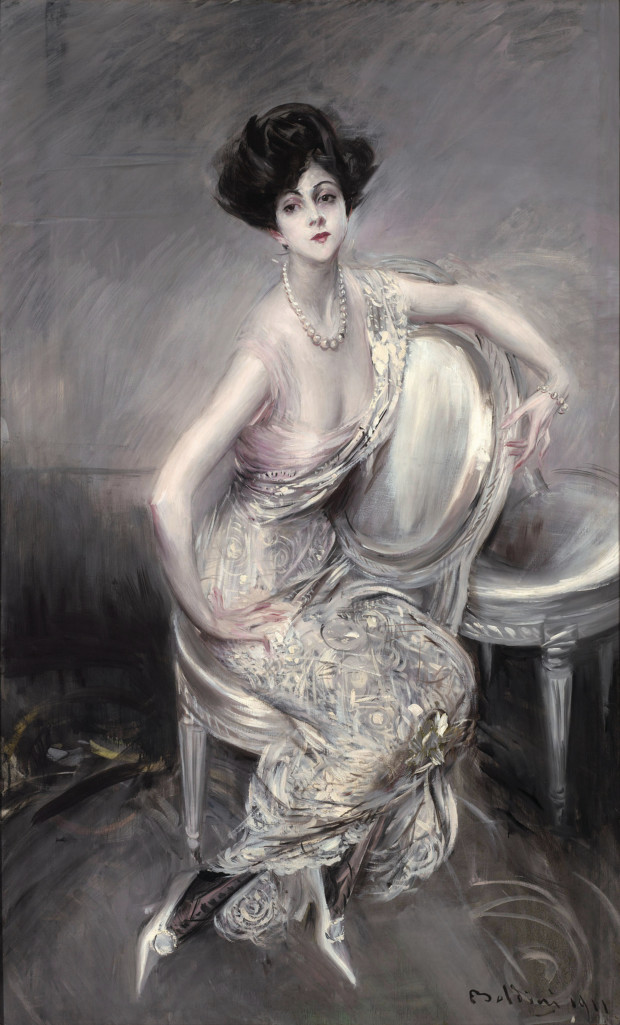
Early in his career back in Italy, Boldini belonged to a group of artists, called the Macchiaioli, who experimented with nontraditional subjects and styles. They had much in common with the Impressionists, who also challenged artistic tradition. Boldini later became friends with several Impressionists; however, his society portraiture did not share most Impressionist values, despite a resemblance in brushwork. Boldini’s style and clientele had much more in common with his contemporary and friend John Singer Sargent, whose portrait he painted several times.
Let’s take a look at some of Boldini’s most fashionable subjects.
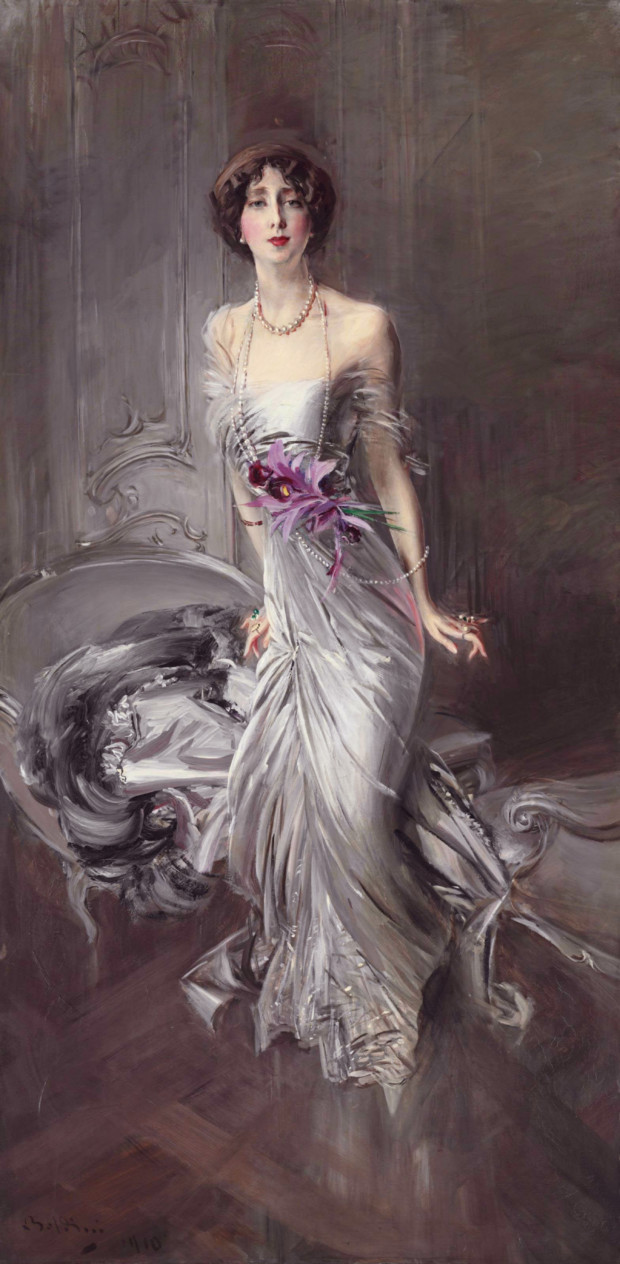
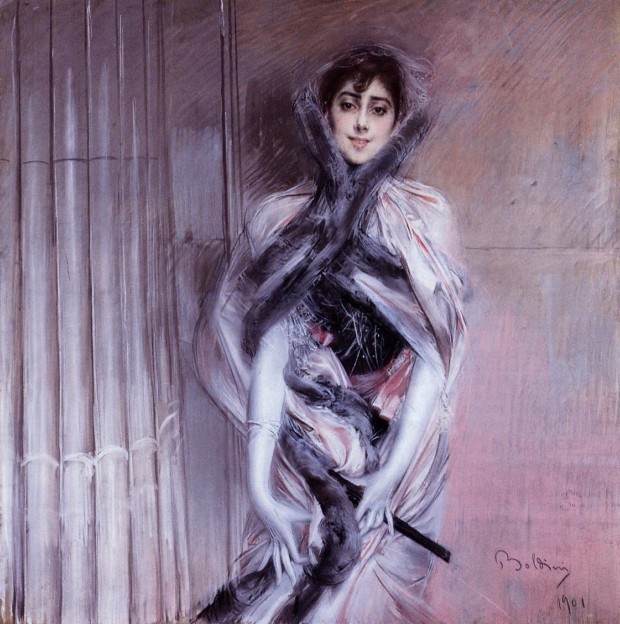
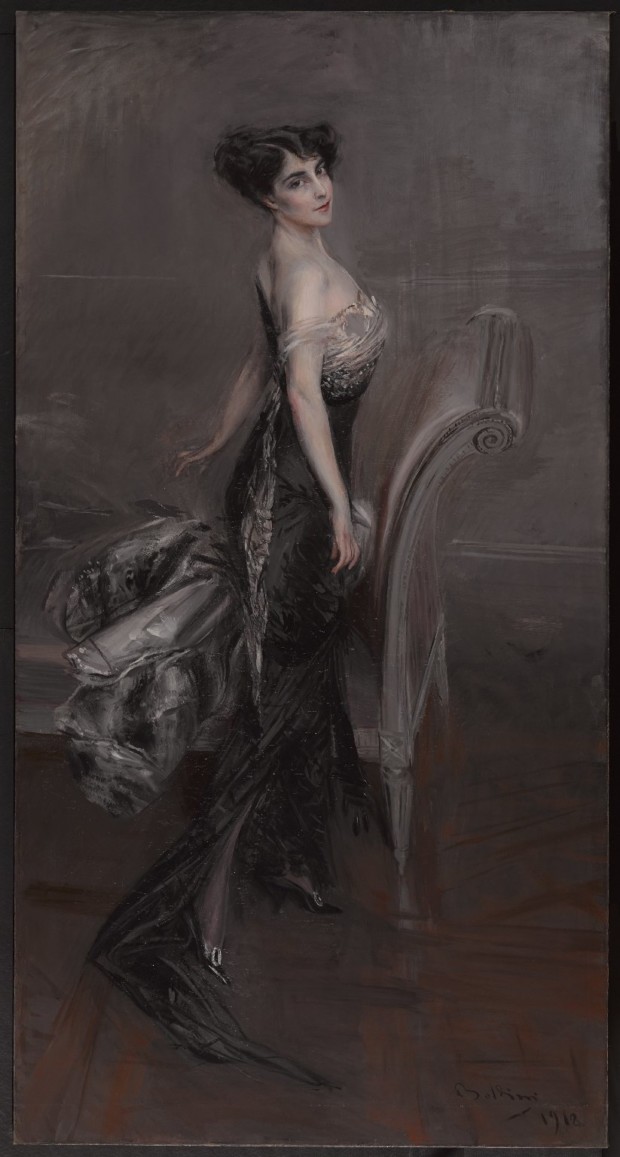
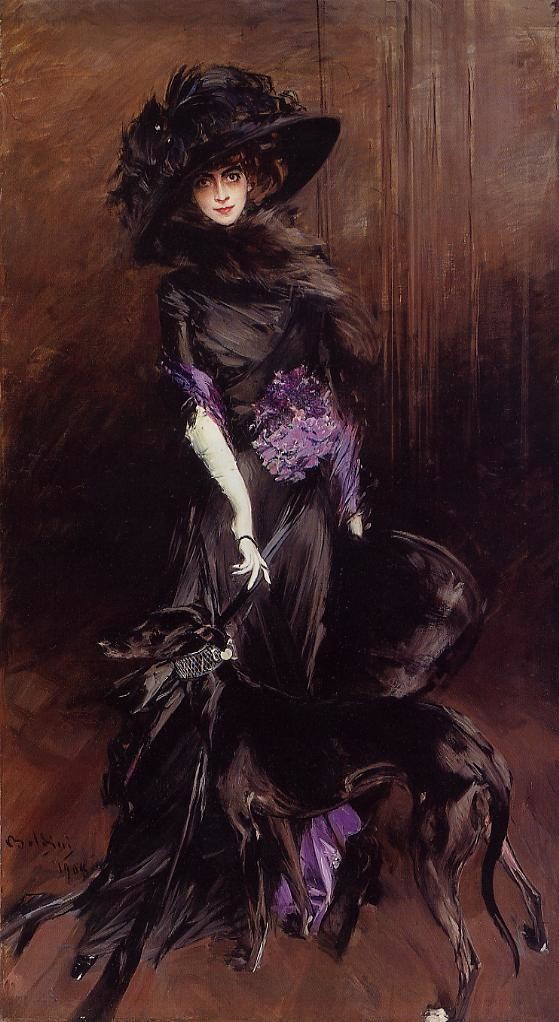
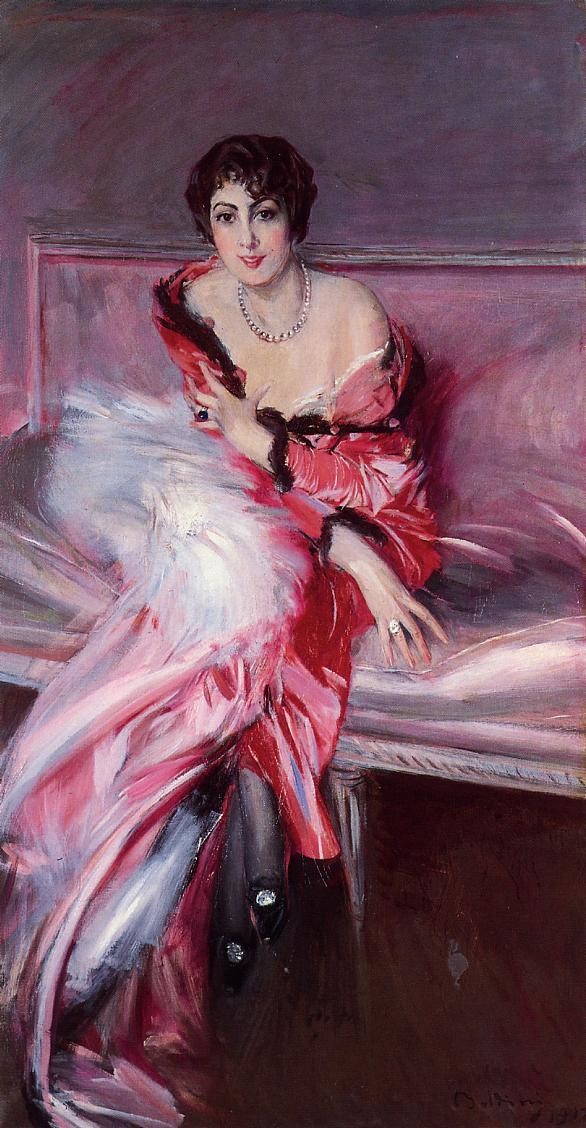
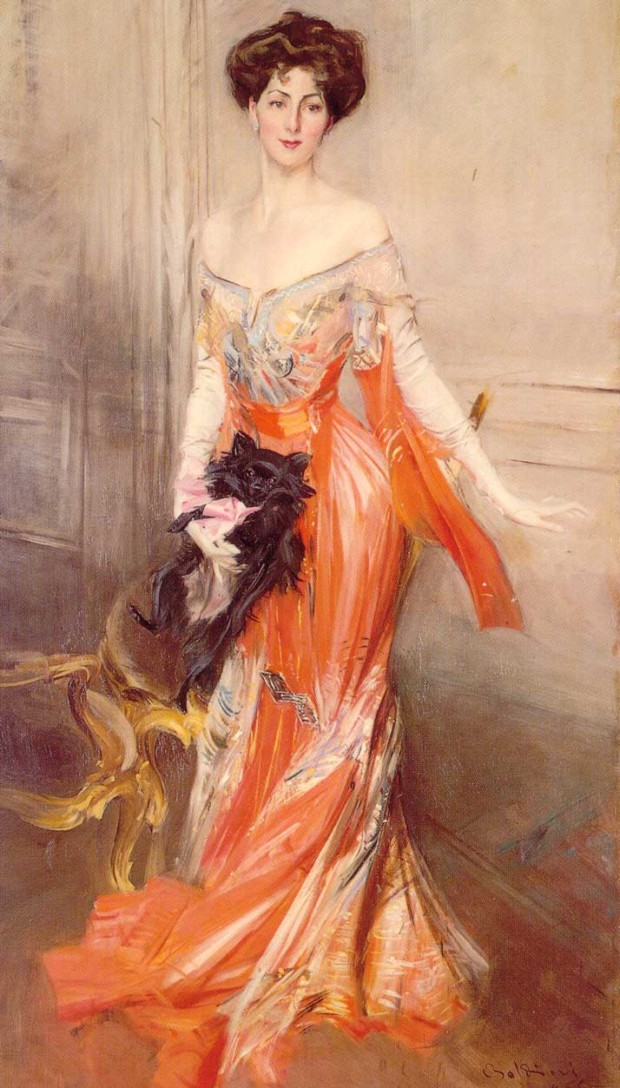
Raymond J. Steiner, “Giovanni Boldini at The Sterling and Francine Clark Institute”, Art Times. March-April 2010. Accessed October 1, 2017.
“Comprehensive and spectacular retrospective of the work of Giovanni Boldini on view in Rome”, Art Daily. Accessed October 1, 2017.
Bill Rau, “Spirited Masterpiece: Rita de Acosta Lydig by Giovanni Boldini”, Art Fix Daily, January 5, 2016. Accessed October 1, 2017.
Natasha Wallace, Giovanni Boldini (1845-1931) Italian-French portrait painter, JSS Virtual Gallery, March 24, 2017. Accessed October 1, 2017.
’The Master of Swish’ – Boldini’s Elegant Portraits of High Society Women, 5 Minute History. Accessed October 1, 2017.
Charles Bonenti, “Rediscovering Giovanni Boldini”, The Berkshire Eagle, February 12, 2010. Accessed October 1, 2017.
A. Cassandra Albinson, “Maximum Exposure: Modernizing the Grand Manner Portrait for the Edwardian Age” in Edwardian Opulence: British Art at the Dawn of the Twentieth Century, Ed. by Angus Trumble & Andrea Wolk Rager, New Haven & London: Yale University Press, 2013. P. 80-89.
“Catalogue” in Edwardian Opulence: British Art at the Dawn of the Twentieth Century, Ed. by Angus Trumble & Andrea Wolk Rager New Haven & London: Yale University Press, 2013. P. 161-162.
DailyArt Magazine needs your support. Every contribution, however big or small, is very valuable for our future. Thanks to it, we will be able to sustain and grow the Magazine. Thank you for your help!